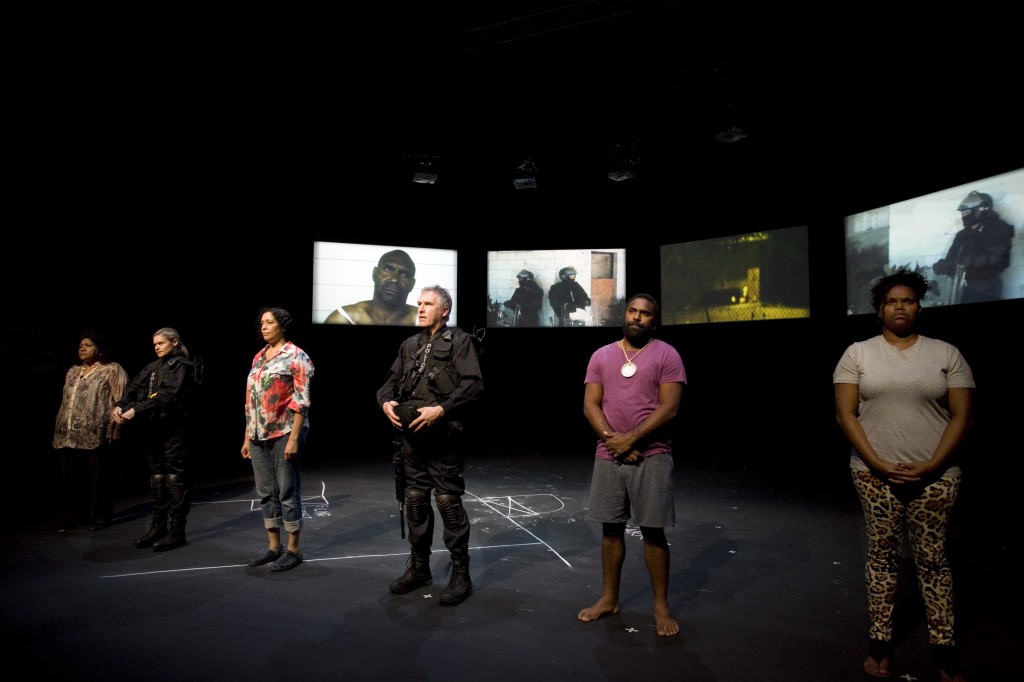Beautiful One Day
There are some news stories I remember years after the event. Like some 2004 reports from Palm Island, off the Queensland coast, when a man died in police custody and when the subsequent coroner’s report stated that his liver had been almost cleaved in two in an altercation with a police officer, Senior Sargeant Hurley.
The man had been arrested for swearing and his injuries were of the type found in car and plane accidents. The event, it’s aftermath, and some history of the treatment of Australian Aboriginal on Palm Island form the core of Beautiful One Day, a documentary theatre collaboration between ILBIJERRI, Belvoir and Version 1.0 theatre companies.
This production comes to us around the time of the anniversary of the death, 19 November 2004. We’re also near the anniversary of Paul Keating’s (and Don Watson’s) Redfern Speech from December 1992. I heard the speech on the radio the day before this performance, and read the transcript The words are stirring and articulate and challenge us to reject this systematic social failure and inequality between Indigenous and non-indigenous Australians. The directness of the speech affects me in a way that Beautiful One Day did not.
Some of the difficulty I had relates to the piece’s assumption that the audience is familiar with things like “The Act” and when it was in force, and I found the pace sometimes too quick to allow me to take in the names of the actors and their familial relationships with a Palm Islander.
The historical recollection about the seven leaders of a resistance against the island administration from 1957 gave some understanding of the treatment of the islanders, and the list of rules governing Palm Island life under a superintendent showed how paternalistic and degrading the administration was towards locals. Aside from these, however, I often felt that there was a need for more signposting; I didn’t know when events were occurring, and whether conditions had gotten better or worse for the Palm Islanders.
The four screens used as a backdrop were sometimes a help and sometimes a hindrance to the storytelling. For example where official documents were used to recreate the questioning of Hurley in inquiries after the death, a loop of projected images of two actors gently recreating a fall at the police station was a distraction from the interrogation. This documentary component, in which Hurley’s account of events becomes more improbable as medical evidence emerges, and his ultimate acquittal, may have had more impact if allowed our fullest attention. However, the brief footage of riot police against the picture-postcard views gave a jarring dose of reality to supplement the descriptions of the riot that followed the announcement of death from injuries resulting from “a fall”.
To return to the Redfern speech, the line that needles me the most is: “It seems to me that if we can imagine the injustice we can imagine its opposite”. I suspect that many Australians do not appreciate the magnitude of ongoing injustice in their own country. The emphasis put by this play on a tragic, specific event, and its eddies of personal stories didn’t give me the big picture of Palm Island life or an understanding if it’s better or worse elsewhere. However, it’s a prompt to ask the questions necessary to appreciate our progress towards an equitable society.

